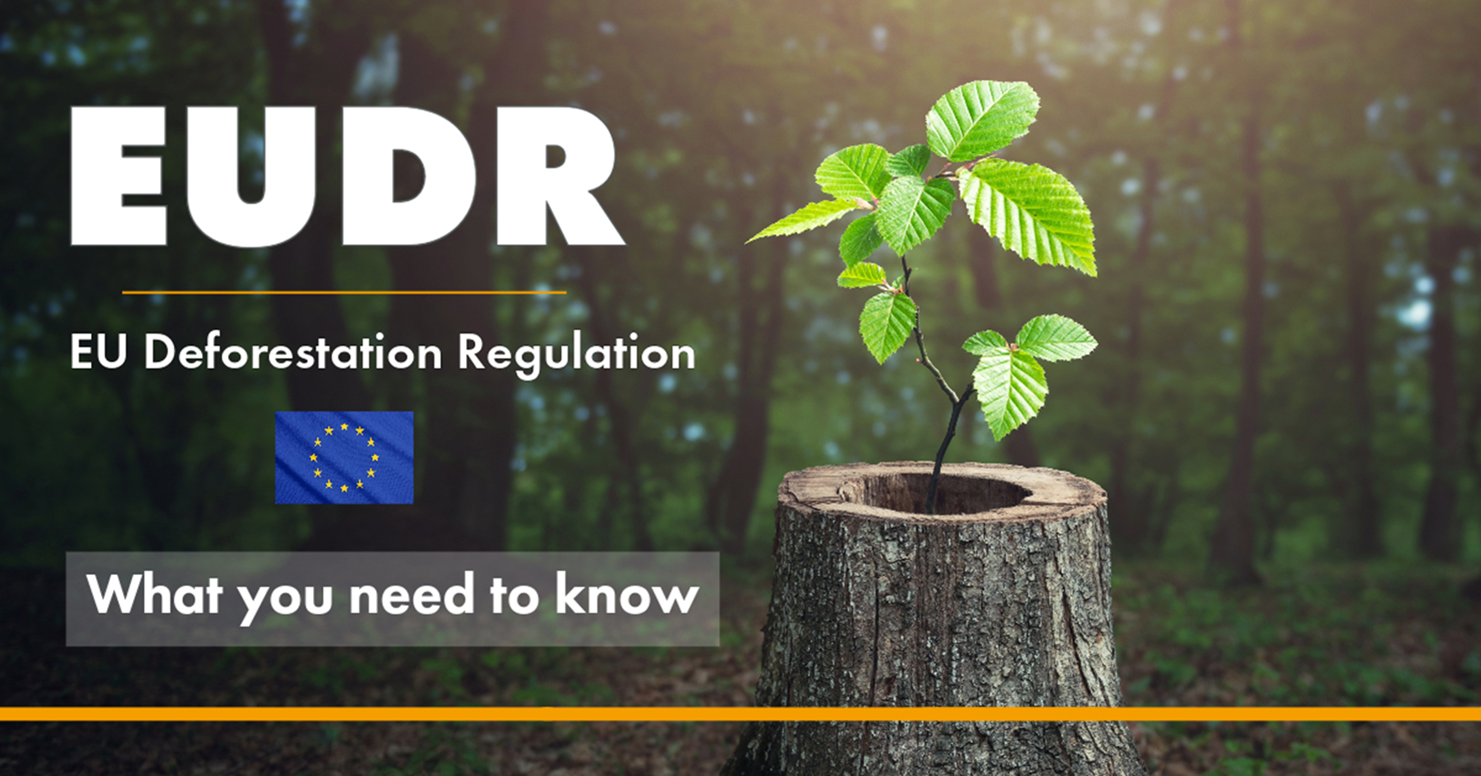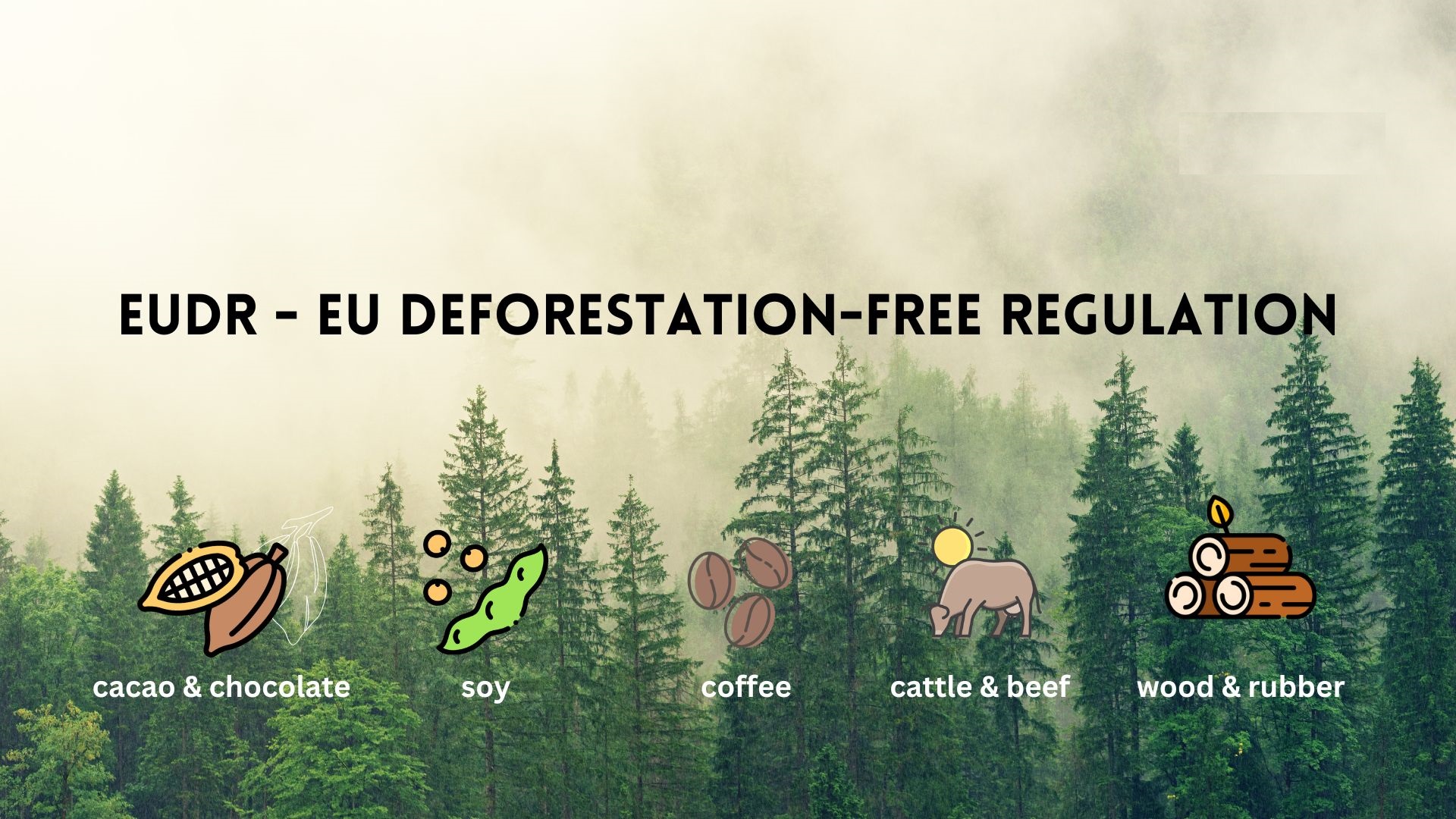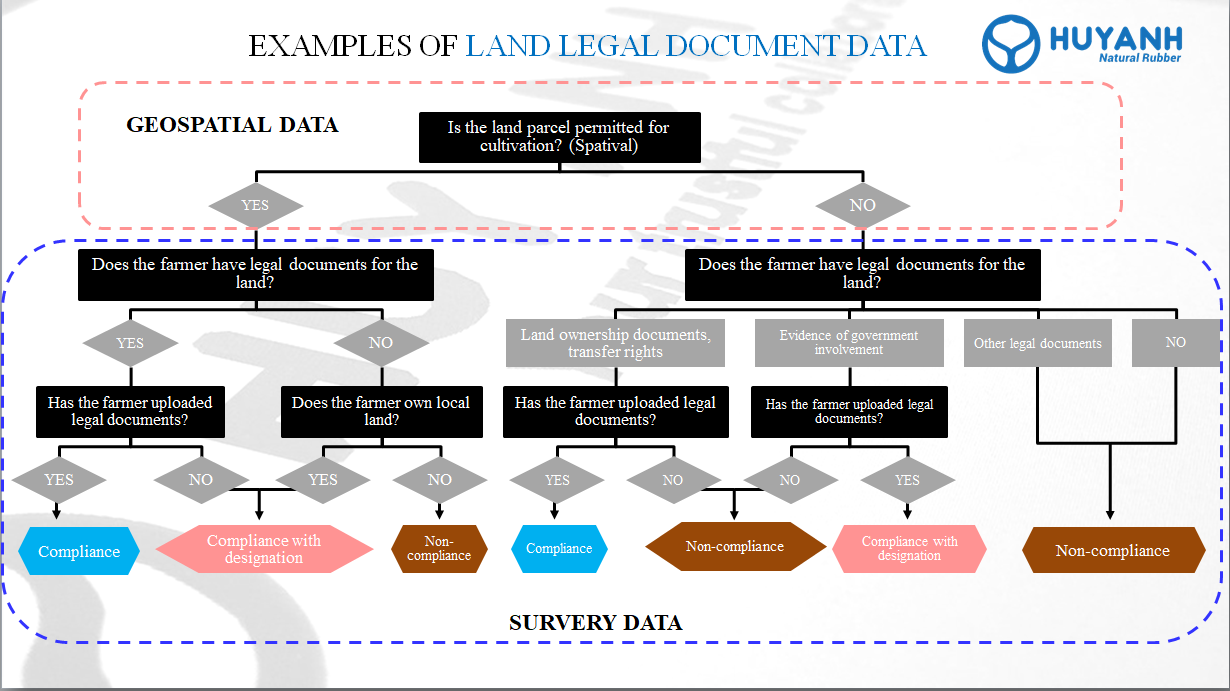In June 2023, the European Union adopted the Regulation on Deforestation – free supply chains (EUDR). This regulation was born in the context of the world’s forests being degraded and destroyed for the purpose of producing goods such as: soy, beef, palm oil, wood, cocoa, coffee, rubber as well as products derived from these items such as leather, chocolate, tires or wooden furniture.
As a large market for the above items and products. The European Union is actively leading the way to solve this problem and is deeply aware of it’s role and responsibility.
Main Content Of The Regulation
1. Objectives
1.1. The new regulations aim to:
+ Ensure that products listed in category of the Regulation that are purchased, used and consumed by Europeans or exported don’t contribute to deforestation and forest degradation in the European Union or globally.
+ Reduce by at least 32 million tonnes/year the carbon emissions resulting from the consumption and production of relevant EU goods.
+ Completely end deforestation and forest degradation to expand agricultural land area for production of products listed in the Regulation, while promoting the establishment of deforestation-free supply chains.
1.2. Scope of the regulation
This regulation includes principles for placing on the market and exporting from the European Union products/goods that are nourished from fed with or contain raw materials of the following commodities: livestock, cocoa, coffee, palm oil, rubber, soy and wood.
1.3. Obligations
Individuals, organizations and enterprises operating in the field of import-export and trade aren’t allowed to bring relevant goods and products into the European Union market or export such goods and products from here, if they don’t meet the following conditions:
+ These products and related goods don’t cause deforestation.
+ The production process of such products and goods complies with the laws of the country of manufacture.
+ Products and goods are guaranteed through a statement of accountability.
What are the specific requirements for compliance and accountability for individuals, organizations and businesses operating in the import-export sector?
+ Accountability is a series of activities including: information collection, risk assessment and proposing risk mitigation measures. This process is not formal but focuses on risk assessment and proposing mitigation measures based on the information and documents collected. Performing accountability is a mandatory requirement for individuals, organizations and businesses don’t belong to the small and medium-sized group operating in the field of import-export and trade.
+ When collecting information, it is necessary to clearly identify the geographical location of all plots of land where the goods or raw materials used to produce the products are produced, as well as the date or period of production to ensure the traceability of the goods to each plot of land where the goods or raw materials of the goods are produced. Individuals, organizations and businesses operating in the field of import and export need to assess the risks, if necessary, because traceable products with a negligible risk of non-compliance may be mixed with products of unclear origin or produced on land with deforested or degraded forests.
+ Annually, individuals, organizations and businesses operating in the import-export sector are responsible for reviewing, updating and publicizing their accountability systems.
2. Main Concepts
2.1. Deforestation
Conversion of forest use to agricultural land, whether or isn’t caused by humans.
Rubber and oil palm plantations and agroforestry systems are considered agricultural plantations. Products produced on land where forest has been converted to agricultural use after 31 December 2020 aren’t allowed to be placed on the EU market.
2.2. Products that do not cause deforestation
Related products that are composed of, are grown by, or are produced with related commodities produced on land that isn’t deforested as of December 31, 2023;
2.3. Forest degradation
The following are the forms of structural forest change:
+ From primary forest or naturally regenerated forest to planted forest or other forested land.
+ From primary forest to planted forest.
2.4. Traceability
It is necessary to trace the origin of the product down to the plot of land (i.e., information on the geographical coordinates of the plots of land where the goods were produced) to demonstrate that don’t deforestation occurred at a particular geographical location.
The declarations of due diligence by individuals, organisations and enterprises other than small and medium-sized enterprises operating in the field of import and export to the European Union market or exporting from here must show information on geographical coordinates. Individuals, organisations and enterprises other than small and medium-sized enterprises operating in the field of import and export and trade will have to submit the relevant information to the Information System. This system isn’t connected to databases in the information systems of third countries.
Mobile phones, handheld devices using the Global Navigation Satellite System (GNSS) and popular and free digital applications (e.g., Geographic Information Systems) can be used to determine the coordinates of the geographic location of a land plot. For land plots with an area of more than 4 hectares used for the production of non-livestock goods, it is necessary to determine the coordinates of the plot’s defining points (polygons), which means having the latitude and longitude data written in the form of six decimal places of all points expressing the perimeter of each land plot.
For land plots with an area of less than 4 hectares, individuals, organizations and enterprises isn’t belonging to the small and medium-sized group can choose to provide information on the coordinates of the defining points (polygons) or the latitude and longitude written in the form of six decimal places of a single point expressing the geographic location of the land plot.
2.5. Risk level classification
The European Commission operates a system that classifies countries, or regions within them, according to their risk of deforestation in commodity-producing countries, into three levels (high, standard, or low).
“High risk”: where the assessment concludes that the production of the relevant commodity in countries, or regions within those countries, poses a high risk of non-compliance with the requirements of not causing deforestation.
“Low risk”: where the assessment concludes that the production of the relevant commodity in countries, or regions within those countries, has a negligible risk of non-compliance with the requirements of not causing deforestation.
“Standard risk level”: are countries and regions within countries that don’t belong to the group of countries and regions within countries with “high risk level” or “low risk level”.
Where the products concerned are produced in low-risk countries, the due diligence obligations of individuals, organisations and businesses operating in the field of import and export are simplified, and the competent authorities of the European Union Member States will only inspect a small proportion of individuals, organisations and businesses operating in the field of import and export.
Where the products concerned are produced in high-risk countries, the competent authorities will inspect a larger proportion of individuals, organisations and businesses operating in the field of import and export. The Regulation doesn’t apply a ban to some countries or goods.
3. Time Frame And Deadline For Application Of The Regulations
The Regulation will enter into force on 29 June 2023, and will apply transitional periods. The provisions regulating the obligations of individuals, organisations and medium and large-sized enterprises operating in the field of import and export, as well as the corresponding control responsibilities of the European Union Member States, will apply from 30 December 2024 (after 18 months of transition). For individuals, organisations and micro and small-sized enterprises, the provisions regulating similar obligations will apply from 30 June 2025 (after 24 months of transition).
EU Member States are obliged to establish competent authorities and inform the European Commission of their role in the regulatory system by 30 December 2023. These competent authorities are to support and guide individuals, organisations and businesses operating in the import sector when necessary.
The European Commission will complete the process of establishing and continuing to maintain an Information System to store the declarations of due diligence and registration information of individuals, organisations, enterprises operating in the field of import, export and trade as well as their authorised representatives in the European Union and other relevant information by 30 December 2024.
The European Commission will provide access to this information system to customs authorities, competent authorities, individuals, organisations, enterprises operating in the field of import, export and trade as well as their authorised representatives.







